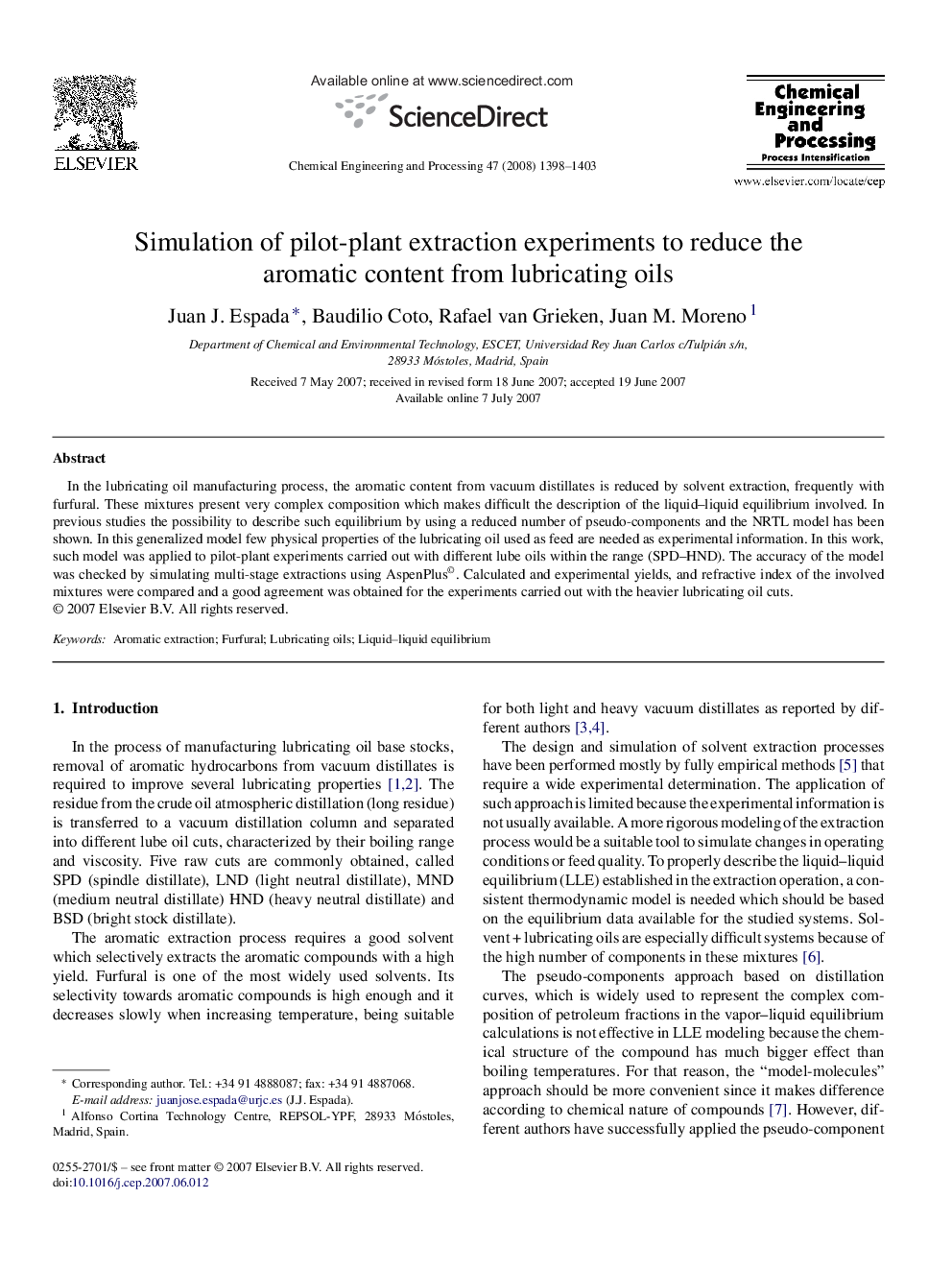| Article ID | Journal | Published Year | Pages | File Type |
|---|---|---|---|---|
| 688103 | Chemical Engineering and Processing: Process Intensification | 2008 | 6 Pages |
In the lubricating oil manufacturing process, the aromatic content from vacuum distillates is reduced by solvent extraction, frequently with furfural. These mixtures present very complex composition which makes difficult the description of the liquid–liquid equilibrium involved. In previous studies the possibility to describe such equilibrium by using a reduced number of pseudo-components and the NRTL model has been shown. In this generalized model few physical properties of the lubricating oil used as feed are needed as experimental information. In this work, such model was applied to pilot-plant experiments carried out with different lube oils within the range (SPD–HND). The accuracy of the model was checked by simulating multi-stage extractions using AspenPlus©. Calculated and experimental yields, and refractive index of the involved mixtures were compared and a good agreement was obtained for the experiments carried out with the heavier lubricating oil cuts.
